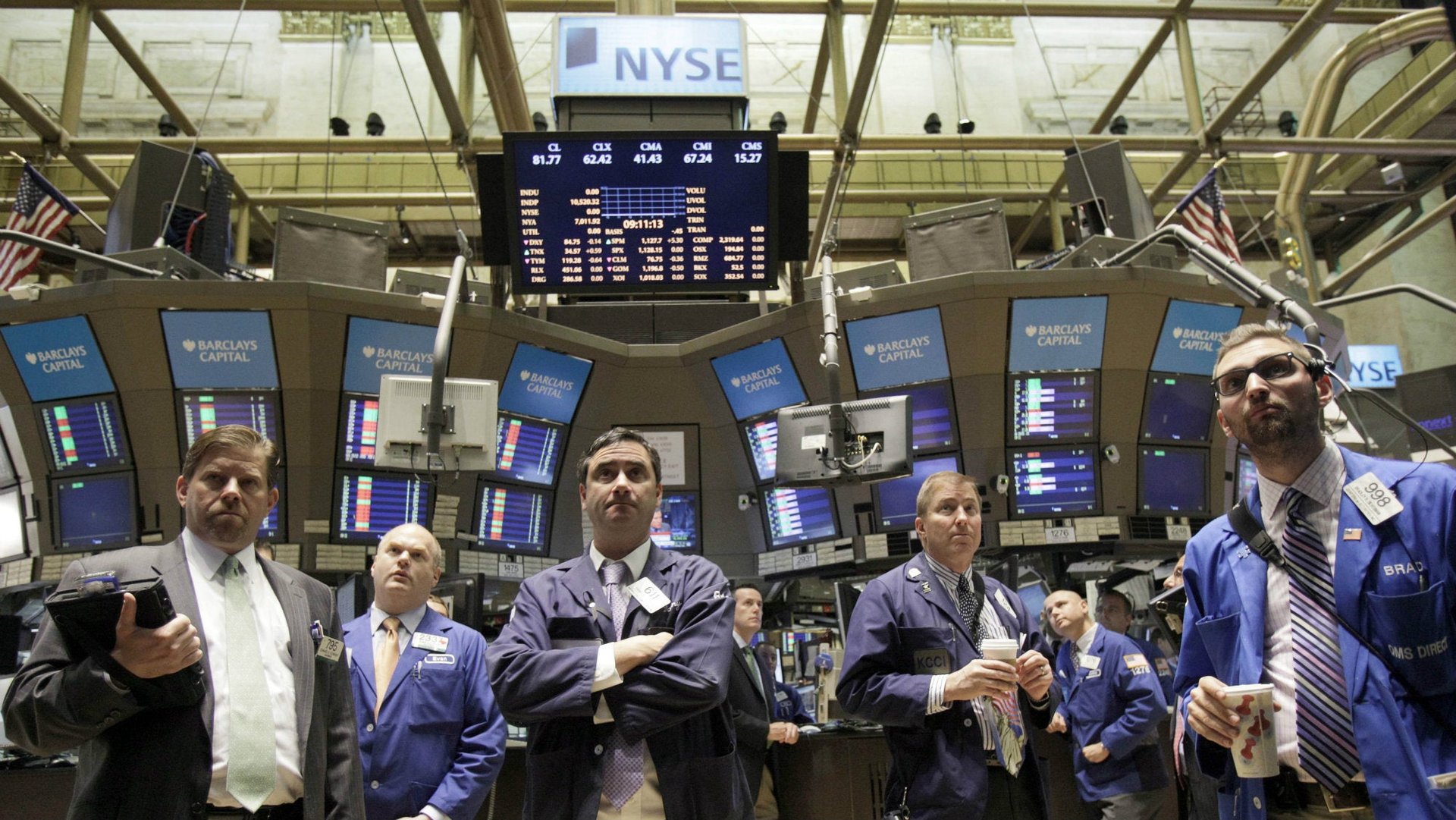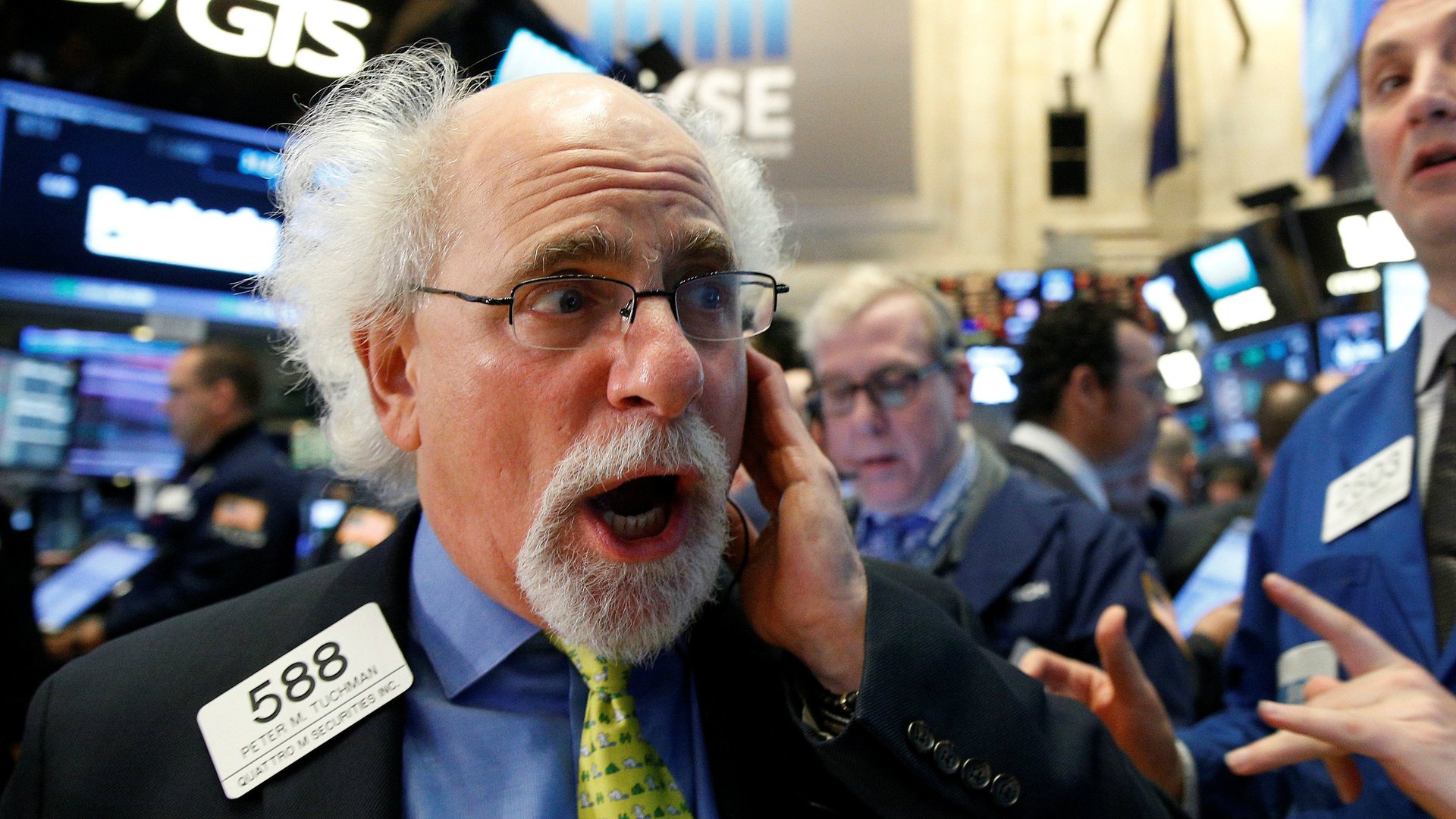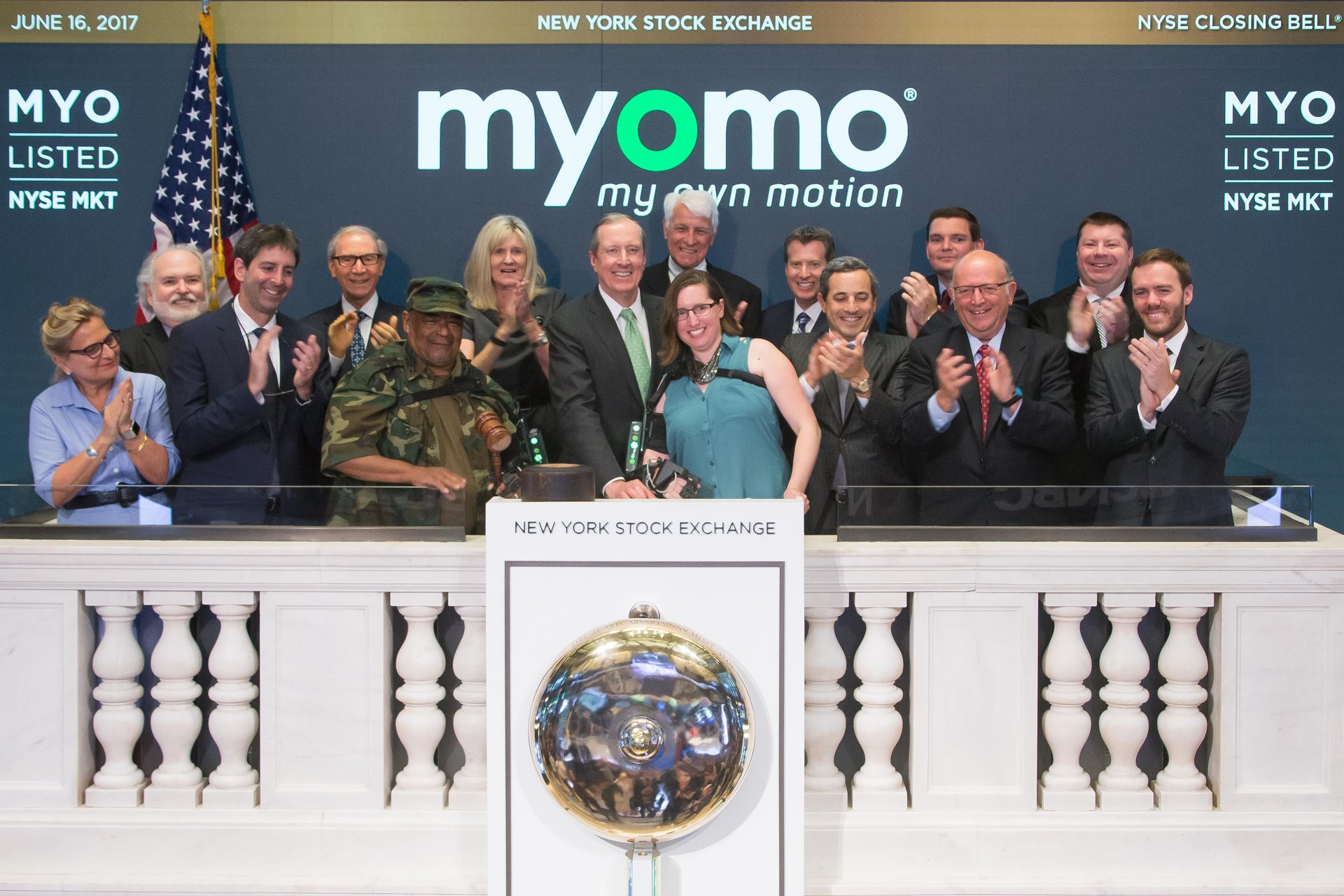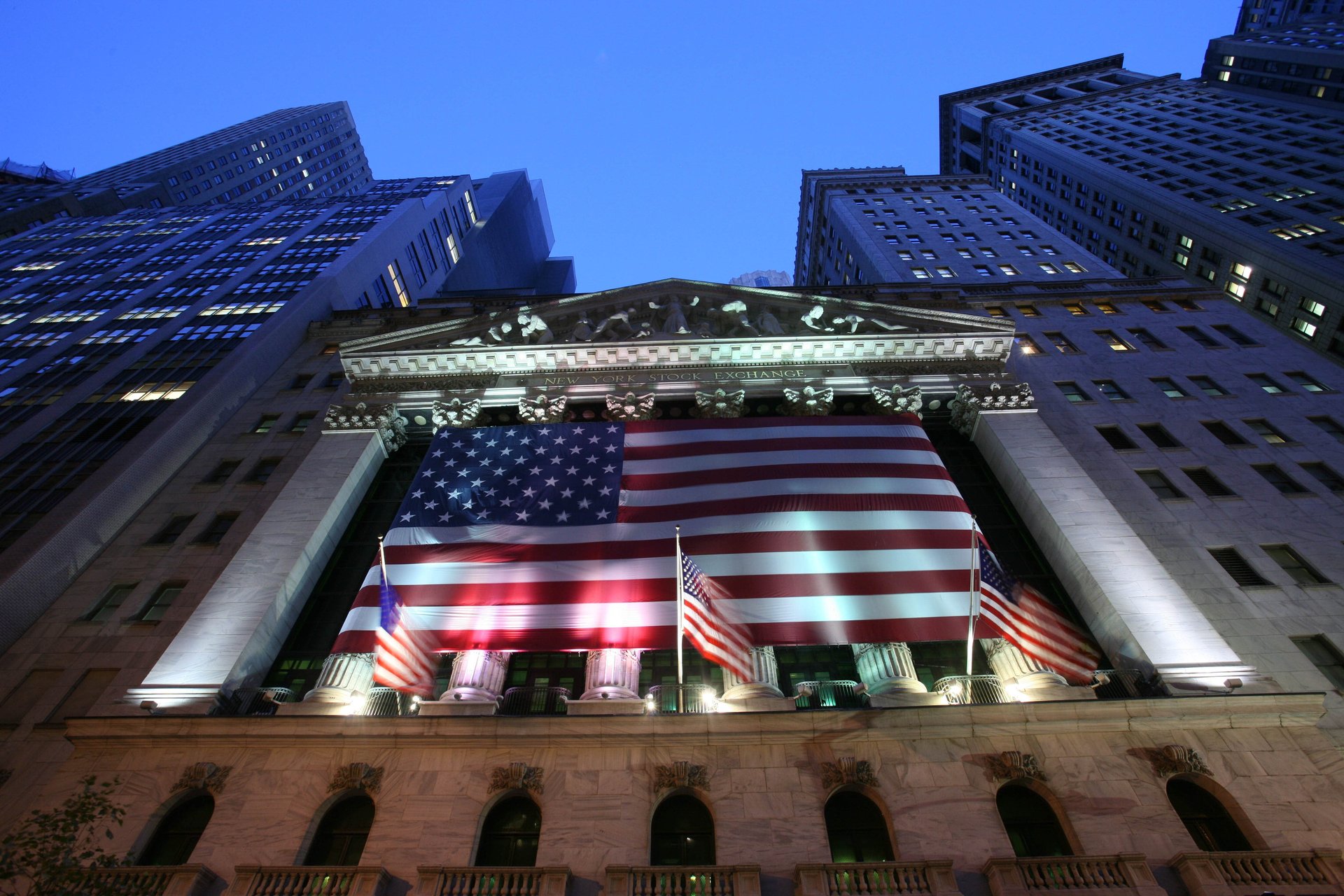Why robot traders haven’t replaced all the humans at the New York Stock Exchange—yet
As in so many other industries, robots have been marching into Wall Street for years. That’s especially the case in stock trading, where algorithms now do the majority of buying and selling. Instead of a boisterous trading floor, these days many US equity transactions happen in a data center in suburban New Jersey. One place where human traders are safe, though, is the New York Stock Exchange, which has roots going back two centuries. The stock exchange has made sure its human presence is protected, for now.


As in so many other industries, robots have been marching into Wall Street for years. That’s especially the case in stock trading, where algorithms now do the majority of buying and selling. Instead of a boisterous trading floor, these days many US equity transactions happen in a data center in suburban New Jersey. One place where human traders are safe, though, is the New York Stock Exchange, which has roots going back two centuries. The stock exchange has made sure its human presence is protected, for now.
NYSE’s several hundred traders and brokers are the face Wall Street, and form a crucial part of the NYSE brand, which is perhaps the best known in the financial industry. The stock exchange packs a marketing punch few, if any, businesses can match. But given that computers dominate stock trading just about everywhere else around the world—and play a pretty big role at NYSE, too—it’s reasonable to ask whether the people milling around the trading floor at 11 Wall Street in Manhattan are worth keeping around. Critics argue that it’s a façade for television cameras, a kind of capitalist Disneyland.
“If you were going to start from scratch, trading would be fully automated,” said Larry Tabb, founder of research and consulting firm Tabb Group. ”That said, I think the human role does provide assistance in trading.”

One reason to keep humans around is, indeed, showmanship: When Snap CEO Evan Spiegel rang the opening bell for the first time earlier this year, its polished metal reflected blue-jacketed market makers and cameras on the trading floor. The initial public offering was narrated by CNBC’s Jim Cramer, a Super Bowl for Wall Street that was broadcast around the world. Software can be quickly commodified, but NYSE’s bell ringing ceremony is unique—thanks to the trading floor.
The company touts the 30 media outlets on its trading floor, and the building’s iconic neo-classical facade, as reasons to list there. Stacey Cunningham, the chief operating officer at NYSE Group, acknowledges that the marketing is important, but says there’s more to it than that.
“While the market can be entirely automated, you lose value when you no longer allow for human interaction,” Cunningham said. “We believe that combination is the gold standard.”
Man versus machine
NYSE and Nasdaq are the only US stock markets most Americans have heard of, but there are more than a dozen electronic markets ruthlessly vying for a share of trading in the $26 trillion US market. NYSE’s market share has been steady for the past three years, now at about 22%, but it’s down more than 10 percentage points since 2009 thanks to this growing competition, according to Rosenblatt Securities.
Executives who list their companies on NYSE differ on whether the exchange’s human element matters all that much.
For Nolan Watson, president and CEO of Sandstorm Gold, human floor personnel didn’t play a big role in the company’s decision to list on NYSE. Watson says the company virtually never follows up with anyone on the floor, and the value of such roles is up for debate. He added, however, that there’s a lot of value in being listed on NYSE because of the trading volume and because it’s where the company’s investors want to transact.
“They’re the premium stock market in the world,” he said.
Overall, human interaction between traders of company shares isn’t necessarily the top concern for firms, according to Chris Westfall, a vice president at Financial Executives International, which represents treasurers and chief financial officers. He said executives are mainly concerned with tapping the biggest pool of investors possible and making sure regulators are satisfied.
Human touch
If you wanted to identify a company that represents a future where humans and machines work together, there are few better examples than Myomo, a medical robotics maker. When the time came for company reps to ring the NYSE’s closing bell, the woman who did it was a customer using an orthosis arm Myomo had made.

Myomo CEO Paul Gudonis said the humans on the trading floor at NYSE, the designated market makers (DMM), are very much part of the reason his company listed on NYSE.
The DMMs are given money (rebates) in exchange for providing regular stock price quotes, liquidity, and maintaining orderly trading. To receive those incentives, major high-frequency trading firms like Virtu Financial (which also operate at other big stock exchanges) have to place human workers on the trading floor, too. At NYSE there are computerized electronic-only firms trading that aren’t DMMs, but their rebates aren’t as lucrative because their trading requirements aren’t as stringent.
Myomo’s CEO said he likes the feedback he gets from Virtu about how his company’s stock is faring in the market. The trading firm contacts his CFO if there’s unusually high volume in the company’s shares, for example.
NYSE’s marketing firepower also made him a believer. Myomo is a small company—its market cap is around $40 million—that a lot of people haven’t heard of. But when its ticker, MYO, flashed on the screens over the NYSE trading floor, the stock shot up 60% just from the buzz.
Closing time
Brokers, another group of workers on the NYSE floor, also have a special advantage at the end of the trading day, when the final price of a stock is determined. By law, brokers in the US typically have to buy or sell stocks on the exchange that has the best price during the trading day. That could be on any one of many electronic markets. When the market closes, however, nearly all trading returns to the exchange that lists the particular stock.

Because Nasdaq and NYSE essentially have a duopoly on US company listings, they also have a lock on the closing auction for the stocks they list. It’s the same for a lot of big markets around the world, such as London Stock Exchange and Euronext. Exchange operators usually charge more for trading that takes place in those closing auctions.
The reason the closing auction is so important is because it determines the day’s official final price, and many asset managers are gauged against it. The exchange that lists a particular stock provides this valuable benchmark and funnily enough, it’s a monopoly that many investors actually prefer. Even though Wall Street brokers grumble about paying more to trade during the closing auction, if they were to use any other price, they risk introducing “tracking error” against the standard benchmark. Passive funds, which are tied to indexes that follow end-of-day prices, are likely driving more and more trading into the closing auctions.
Here again, the humans on NYSE’s floor have a special advantage: Brokers can use the d-Quote, which gives them almost 15 minutes of extra time to tweak or add stock orders at the end of trading, which can be the most important price of the day. In the world of computerized trading, as one trader put it, that quarter of an hour is like a few months in human time: news can break, and thousands of other trades can take place during that 15 minutes.
The only way to access the d-Quote is through a floor broker with a handheld device. This order type is incredibly popular, and it means that a significant amount of vital trading still involves human reaction. Market-structure experts say it could probably be done without a trading floor, however.
“We chose to not discard the human influence,” said Michael Blaugrund, who runs NYSE’s equities business. “We want to ensure that there’s appropriate oversight.”
The human touch is important during a crisis, according to Justin Schack, managing director and partner at Rosenblatt Securities, which has nearly two dozen floor brokers at NYSE. When a software error at trading firm Knight Capital caused it to lose $440 million in 30 minutes, there were people on the trading floor manually closing down stock trading, Schack said.
The results are in
Whatever NYSE is doing, it seems to be working when it comes to attracting big IPOs. The exchange is the top global destination for public offerings this year—companies from around the world raised $22.2 billion there via IPOs in the year to August, about double second-place Shanghai, according to Dealogic.
NYSE’s dominance is not assured, of course. Nasdaq, which was formed in 1971, has plenty of heft in the US market, a market bell ceremony in Times Square, and is in perpetual competition with NYSE for IPOs. And two newer technology-savvy firms are taking aim. IEX, made famous by Michael Lewis’s book Flash Boys, and Bats Global Markets, recently acquired by CBOE, are trying to loosen NYSE and Nasdaq’s grip on stock trading. IEX is going after equity listings, while Bats devised an alternative to NYSE’s closing auction.
Dick Grasso, a former head of NYSE, once called (paywall) the stock exchange “the greatest show on earth.” So far, the exchange’s famous trading floor has mostly held off automation’s advance. If—or perhaps when—its model becomes obsolete, it will be a difficult moment for Jeffrey Sprecher, the CEO of Intercontinental Exchange, NYSE’s parent company. Emptying out a national landmark—with its Corinthian columns, American flags, and neoclassical architecture—would be far less popular than finding ways to keep it going.
Correction: An earlier version of this article incorrectly said NYSE accounts for 70% of trading in Sandstorm’s stock.